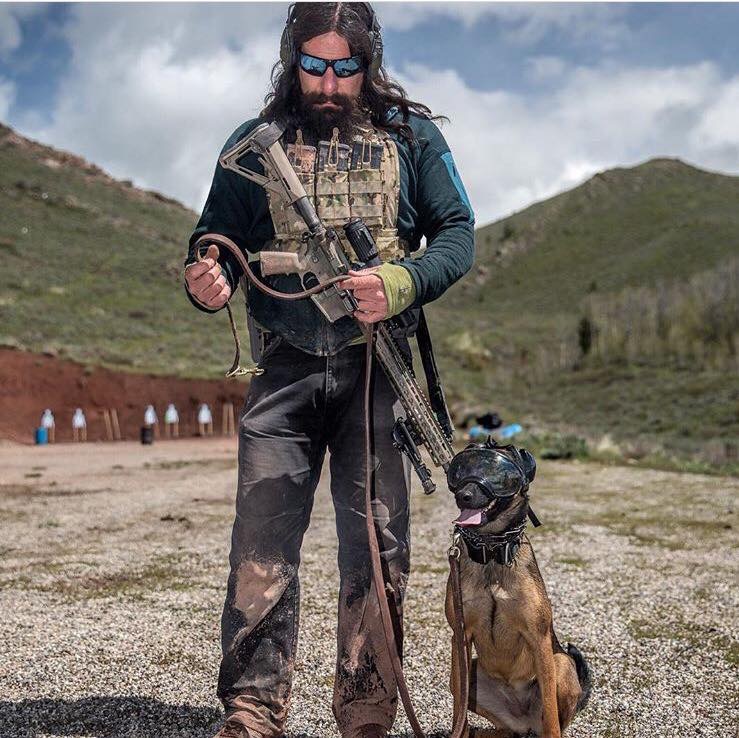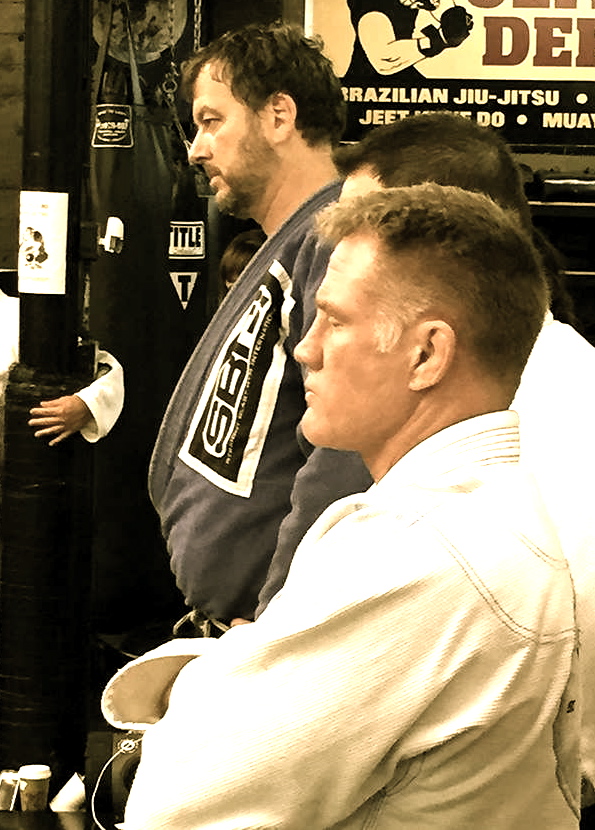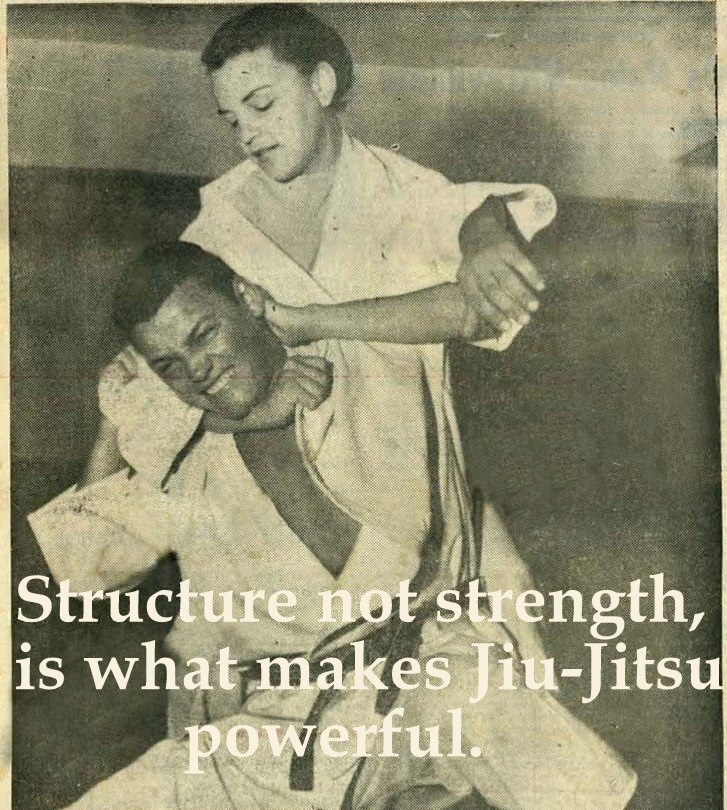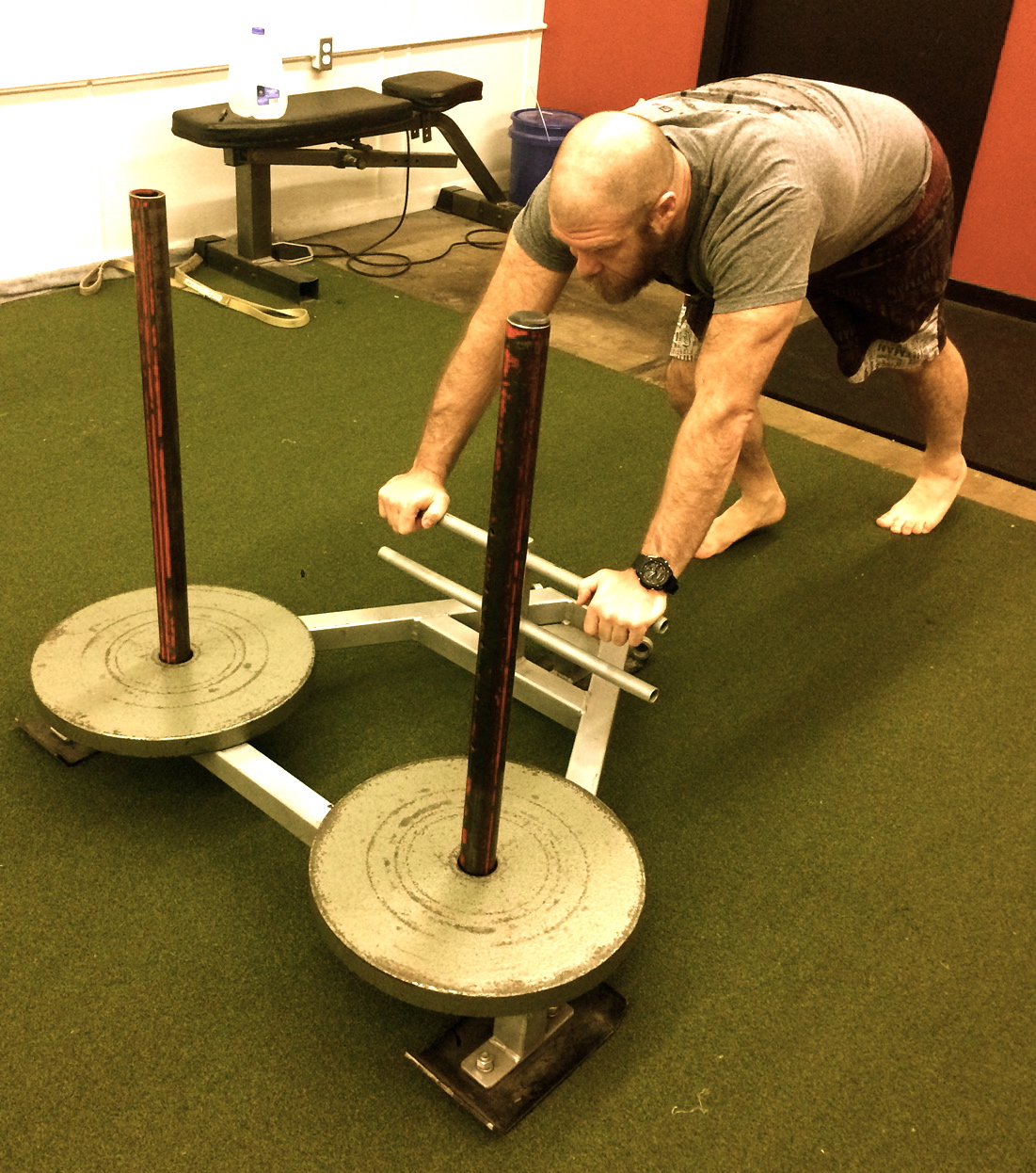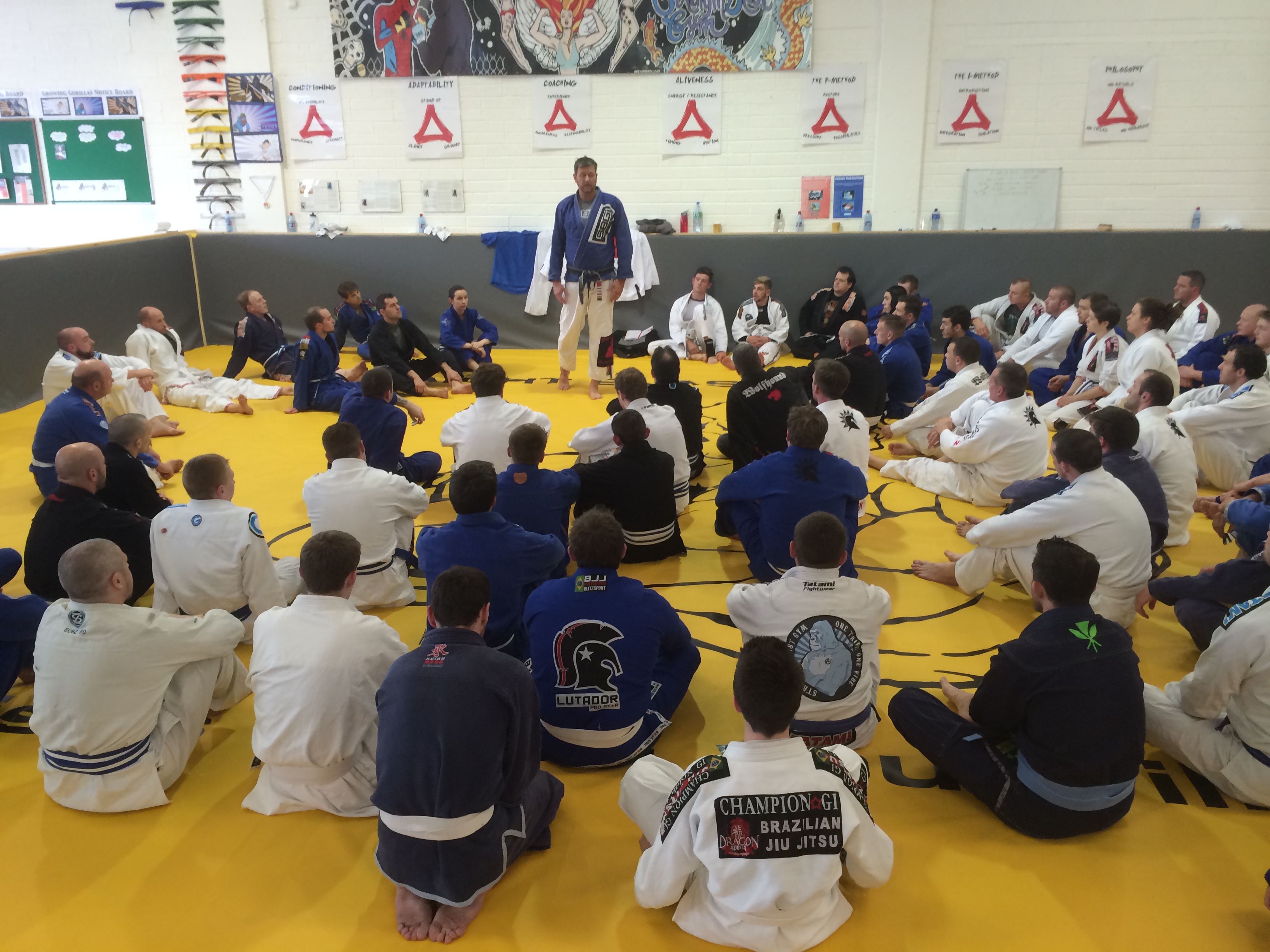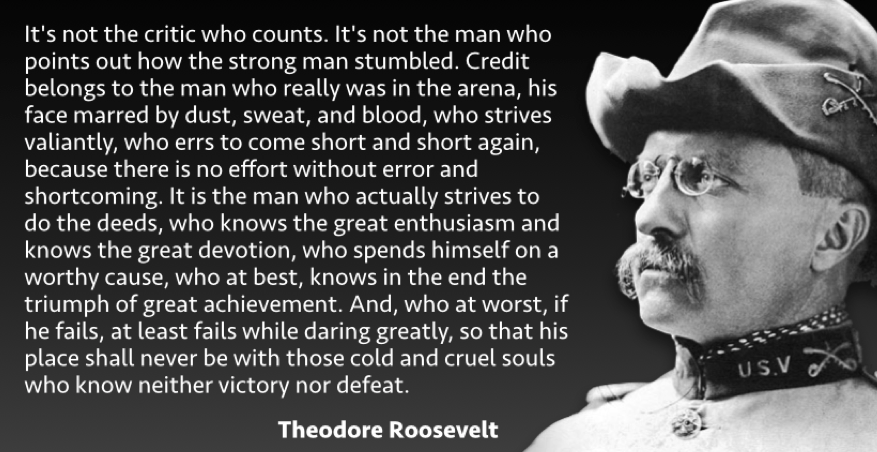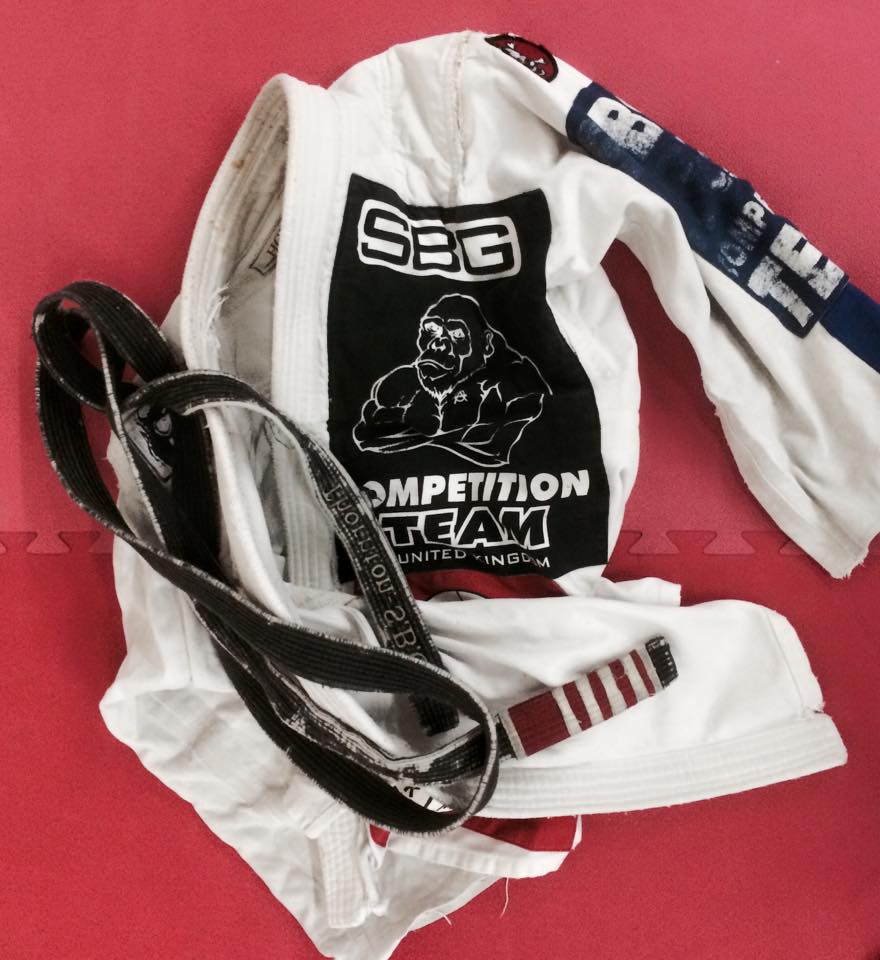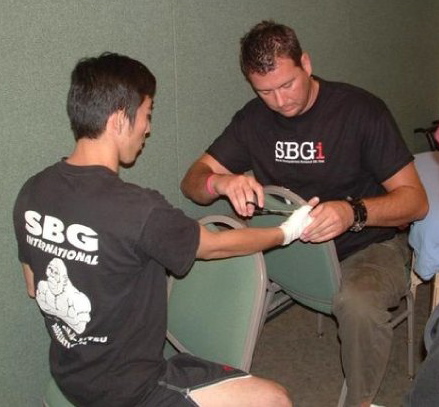Why has every successful military force known to man, from the ancient Greeks and Romans, to the modern CAG, Navy SEALS, and SAS, placed physical fitness as a priority?
Among my first students was a large, strong, older man who made his living as a roofer. Jovial and tough, we trained together a lot. His forte when we sparred was the head and arm position (a modified headlock on the ground, where the person on top has control of both your head, and one of your arms), what in Judo is known as ‘kesa gatame’, or what Larry Hartsell would affectionately call, “Kassy”.
We’d glove up and spar. Younger and with more boxing, I’d get the better of him on the feet. A takedown would occur, and somehow, in the mix, he would always end up holding me in an airtight head and arm. The pressure on my neck would increase. Unable to escape, I would eventually have to tap.
Over time I became better at avoiding the position. But we both knew it was there. And should he get it, we both knew I’d be in trouble.
At the time I was learning Jiu-Jitsu from one of Paul Vunak’s students, Thomas Cruse. He lived in Eugene, and when possible I would visit and ask all the questions that had arisen as a result of sparring. He’d offer solid advice. I’d drive back and try it on the roofer. And I would still be stuck.
Finally, another chance to train with Rickson presented itself.
My Judo partner and I, Craig Bell, who shared the space with me and paid half the rent, brought Rickson up to Oregon for a seminar. During a private lesson Rickson broke down the fine points of the position. Mechanically, it was a simple solution. The head and arm is a fixed position, meaning the possibilities are limited. And like all things in Jiu-Jitsu, when the correct method is known, and the right timing ingrained, the escape can feel easy.
A good rule of thumb to remember is that Brazilian Jiu-Jitsu is always common sense – in retrospect.
As soon as possible I got back on the mat with the roofer. Within fifteen minutes I was able to escape every time. From that day forward, he couldn’t hold me in that position. Jiu-Jitsu had presented me with a puzzle. A puzzle I obsessed over for months. But, like all puzzles, it admits to a solution. You just have to know how to look.
One thing that also shined through over those early years was just how important physical fitness, “conditioning”, is to actual fighting. Sure, when done perfectly, when you completely outclass your opponent, you may be able to achieve a lot without much exertion, just as Rickson did one day when I watched him ironman a room of grapplers without breaking a sweat. But those are not the opponents we are training for. Remember principle #4 (from the upcoming book):
The willingness to engage in competition and the willingness to be vulnerable, exist in equal measure, if the competition itself is a worthy one.
We are training for the opponents who are capable of revealing our own vulnerabilities. And those opponents, as a matter of course, will push your physical limitations.
People can become confused on this point. It isn’t strength that would ever allow someone to beat Rickson on the ground. As he famously said himself in the documentary titled ‘Choke’, “strong guys grow on trees.” The first time you take a team down to the Mundials you realize very quickly, that once you get past the first couple of rounds, every human on the mat is strong. It is efficient technique and timing that we are trying to perfect. But, if you become too exhausted to move, then you’re as good as dead.
It is your muscles, your ‘strength’ that supports the structure, the frames, which give Jiu-Jitsu its power. While true, we never want to use more effort, more muscle, more explosiveness than necessary when training, we also have to maintain a body like an athlete or we will eventually break, succumb to injury, or simply gas out in a long and strenuous match – the kind of match we should be training for.
Watching Rickson for the week he was in Oregon all those years ago hammered home this point. He awoke in the morning and engaged in an hour-long callisthenic routine, every single day. I attempted to do it with him once, failed miserably, and was sore for a week (I was in my mid 20’s). When I asked him if he ever took a break he said, “I cannot take a break. If I do, they will catch up to me.”
I didn’t understand who “they” were. Years later I realized that when he said ‘they’, he meant everyone.
The need for physical fitness extends well beyond improvements in your performance. It also reveals your motives.
One of the questions I often ask students at seminars that are focused on self-defense, as opposed to MMA or BJJ competition, is why they are interested in training ‘self-defense’ at all?
Looking around the room I always see a lot of quizzical expressions.
“Because I want to be able to defend myself?” Someone will offer.
“I get that part”, I say, “I am asking ‘why’ you want to defend yourself.”
Again, perplexed, someone will usually say something along the lines of “so I don’t get killed.” Or “So I can go home safely to my family.”
“So you can live longer?” I will ask.
Everyone nods their head as they wonder why I am wasting their time stating the obvious.
“Then”, I ask, “why are some of you 50lbs over weight?
Why don’t all of you buckle your seatbelt everyday?
Why are you slamming down another 40 ounces of sugar?
Why do some of you still smoke?”
Within the fantasy based martial arts, you wouldn’t find it uncommon to find a “streetfighting” seminar where people talk about tactics, ammunition, and serial killers, and find the room full of obese, camouflage wearing, grossly out of shape, knife carrying paranoids, all actively pretending that their main motive for being there – is to live longer.
The irony is telling.
Men are often attracted to images of what they think being capable of violence looks like, for a whole lot of reasons that don’t have anything to do with actual, real world threats.
The more immature the man, the more palpable this mistake can become.
If living longer were truly what they were after, they would proportion their energy and behavior to the risks. Almost all of us are far more likely to die of heart disease or a fatal car accident, than a knife wielding sociopath who confronts us in a dark alley.
The bottom line is this – if you don’t put physical fitness at the top of your list, self-preservation probably isn’t the thing that’s really motivating you.
I want to stop and make a note here. I once gave this speech in a large American city. Coming back from lunch I watched a couple of young students who had told me earlier that their reason for attending was learning how to defend themselves in the “street” – blindly walk into oncoming traffic. Totally unaware of their surroundings, they were too busy discussing color-coding options for various forms of imagined threats. I actually had to put my arm out to keep one of them from becoming an auto accident statistic. Annoyed by this, I dropped my “why are you eating donuts while driving without your seat belt on” speech as soon as we got back, only to realize afterwards, that sitting in the audience there actually was a very obese man who had attended my class in an effort to get into shape, and do exactly what I was telling everyone to do.
I’ve always felt mortified when someone around made an unkind comment about a stranger who may be in earshot. I softened my message a bit after that. It’s never made sense to me when people make fun of grossly overweight folks they see running or exercising in a gym. Isn’t that what they should be doing?
So back to our original question, why has every successful military fighting force known to man, from the ancient Greeks and Romans, to the modern CAG, Navy SEALS, Special Forces, and SAS, placed physical fitness as a priority?
Five reasons:
1- Because when you run out of physical energy in combat, you are as good as dead.
2- Because operating under those conditions helps mimic the way your body will feel when it is actively engaged in the fight, and the adrenal glands are raging.
3- Because doing so tests your mind, your “heart”, as well as your body.
4- Because it allows a warrior to travel longer, faster, and farther than an unconditioned human can.
5- And because once they arrive, that soldier will be able to fight longer, faster, and harder than an enemy that isn’t in the same kind of shape.
We have a term for elite athletes who are also elite with weapons – elite soldier.
This brings us to the actuary table of actuality. Most human beings are terrible at assessing risks accurately. We know this from how they behave, and what they fear. As a species, we tend to give a great deal of unwarranted attention to risks that are both beyond our control, and highly unlikely; terrorist attacks, airplane crashes, nuclear power plant disasters, and the Ebola virus, all occupy far more attention than is justified by people who are not actively engaged in jobs that involve those threats. At the same time, we give far less attention to things like smoking, poor diet, lack of exercise, and car accidents, all things far more likely to kill us, and ironically, all things we have much more control over.
It’s an interesting phenomena, but if we want to be serious about self defense – self-preservation, than we will need to recognize this human tendency, and proportion our own efforts, energy, and time, in directions that we can control and affect.
Let’s look at what actually kills us.
This data varies depending on your age, gender, and other factors, but even taken as a whole, the numbers tell an important story.
Deaths in the US every year:
First and foremost, over 26% of all deaths are a result of heart disease. This is our biggest killer.
Our number two killer, cancer, follows that closely with just over 23%.
Together, cancer and heart disease account for about half of all deaths. With the two largest, preventable factors being smoking, and obesity.
Coming in third is chronic lower respiratory disease, or CLRD. Smoking is also one of the largest contributing factors to CLRD.
Next, at number four, comes stroke. Actively monitoring your blood pressure, watching your cholesterol, and managing your diet, are all within our control. Something I have to pay close attention to myself.
Coming in at number five is accidents, with car accidents being the largest type. Speeding, impaired driving, and not wearing your seatbelt, are three of the most common problems.
Second to that comes poisoning, and while you may think that children or the elderly are the largest victims, its actually adults who ingest illegal drugs which make up the vast majority of these numbers. The preventable factor involved here is self-evident.
After car accidents and drug overdoses, comes falls, fires, and choking – in that order. All of which can be mitigated to some degree through your environment and staying generally healthy.
A note here, the evidence seems to be overwhelming that a large percentage of disease is hereditary, or put another way, simply ‘bad luck’; familial breast cancers being a good example. I in no way mean to imply that lifestyle changes will guarantee good health. But even if all controllable factors, not smoking, eating healthy, exercising, getting your flu shot, etc., added up to only 20% better odds, we would still be talking about something substantial.
After heart disease, cancer, respiratory disease, car accidents, and drug overdoses, comes diabetes and Alzheimer’s. Suicides account for about 1.4% of all deaths yearly, less than half of what diabetes takes.
Where is violence on this list?
If we add all U.S. homicides, including terrorist attacks, they account for less than 0.766% of all deaths.
As a functional Martial Artists, a combat athlete, being in shape, being healthy, and being smart, will help you perform better, avoid injury, and train more frequently. But far more importantly than all that, it is one of the largest factors you have control over when it comes to defeating the most likely homicidal threats, the ones that cause the vast majority of all deaths in this nation – disease and accidents.
If you’re not focused on staying healthy and being in shape, then you’re not yet serious about self-preservation.
Keep that in mind the next time you hear someone pontificating about which type of ammunition has greater knock down power, or which form of deadly “street” fighting martial art will render a more lethal strike. An overweight, out of shape, chain smoker, who rarely wears his seatbelt, is fond of driving fast, drinks a 32oz sodas, and spends his time worrying about what type of firearm he should carry, isn’t really concerned about self-preservation.
He’s really concerned about humiliation.
He doesn’t want to be beaten up in front of people.
The cure for this guy isn’t another “streetfighting” class or a concealed carry permit. The real solution for what plagues and threatens this man is a solid regime of combat athletics and exercise.
Now that we’ve established the need, let’s discuss the implementation.
I’m not going to list exercise routines, or detail ways to lift, stretch, or build up your energy systems. There is more information than any human could ever watch, hear, or read, on the web regarding those things.
Instead I’m going to give you three simple principles to build your own program around.
#1 Safety:
Seem obvious? It isn’t. The world is filled with people wind sprinting to the next poorly done Olympic lift, in the inevitable race to their next surgery.
Breaking your body down in an effort to build yourself up – injuring your body in an effort to make yourself stronger – never makes sense. So first and foremost, find a good source to make sure you know how to properly, and by proper I almost always mean structurally, do the exercise.
For combat athletes this is even more important, because it’s structure and distance (space), which creates power (leverage) for us – and the lessons you learn when doing a proper squat or press, will translate directly into your functional martial art.
#2 Efficiency:
Efficiency is the end goal for all intelligent athletes, fighters, and soldiers. If you’re a combat athlete your first objective is to spend as much time as possible doing your actual art/sport. I lift weights so I can train Jiu-Jitsu more. I do not lift weights and train Jiu-Jitsu less. If getting stronger was the secret sauce to winning fights, you would have pro football players dominating the Mundials, and power lifters dominating college wrestling. We know that’s not the case.
So how much exercise do I want to do?
As little as possible, but not less – that’s always the rule.
Given the reality that the body (especially the PED free body) has a limited amount of training it can do in a given time before it’s pushed into a catabolic state, I want to do as little exercise as possible – but no less.
What does this mean in application? It depends on your fitness level, but anything that hits multiple areas with a single exercise is going to be more efficient. Squats and deadlifts are great examples. An “arm day” that incorporated curls, tricep extensions, forearm curls, .etc – being an obvious example of the opposite.
You’re not a body builder, you’re a fighter; you shouldn’t have the time or energy to spend two hours a day doing exercise, that’s time that should be spent on the mat or in the cage.
For your energy systems, you could run long distances on the street, which taxes the body and fails to touch the anaerobic system. Or you could work sprints, which hit both the aerobic and anaerobic systems, and done correctly, saves wear and tear on your vessel. Keep it efficient.
Last but not least is the real secret to it all.
#3 Consistency:
SBG coach Ray Price told me a story about a gentleman who ended up winning a prestigious shooting competition, after having to do a great deal of his training with an airsoft gun. Why? Because he came from a nation where firearm possession was illegal. He did what he could do – regularly. He put in hour upon hour with grip, sight, and trigger.
He was consistent.
One good way to measure how poorly someone will or will not do with exercise, is to notice how frequently they change programs. In a perpetual search for the magic bullet, they purchase bodybuilding magazines, buy all the latest supplements, and fall prey to all the click bait on their Facebook feed that promises “amazing” gains. But the one thing they don’t do, is never skip a workout.
An athlete who has a simple, basic exercise routine that takes less than 15 minutes a day, but never skips a workout, will, after a year, be a lot more fit than the wannabe who’s up to date on the latest high tech conditioning science, has a routine designed by the worlds top coaches, and sticks with it for a month, before going back to a sedentary life in front of a computer.
Here is one simple rule, that if followed, will ensure you never fall prey to this most common of all conditioning failures.
Unless you’re injured, sick, or resting for an upcoming competition (meaning you have worked your ass off up to that point) – never skip a workout.
Homo sapiens are creatures of habit. We are routine loving primates. Get out of routine, you lose the habit, maintain the routine, and you create the habit. It really is that simple.
Three principles. Make sure what you do is safe. Make sure it’s efficient, leaving as much in the gas tank as possible for your actual sport. And be consistent – don’t skip workouts.
Weights? Great.
Yoga? Great.
Pilates? Great.
Calisthenics? Great.
Same three principles apply – always.
Everything you get from conditioning you earn; and that, in large part, is why it’s meaningful.
The Greeks understood this.
Plato understood it.
It’s a reminder that no one owes you anything, not even your body.
Embrace the struggle – the results will follow.
